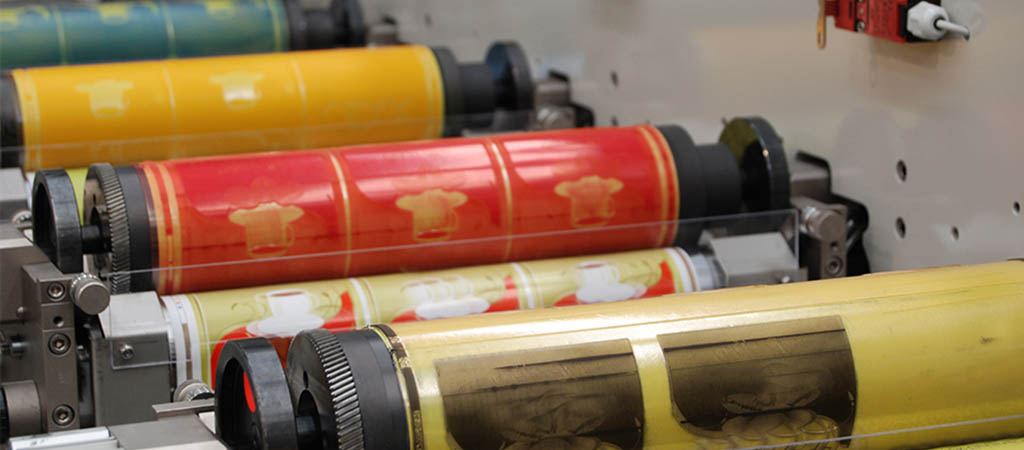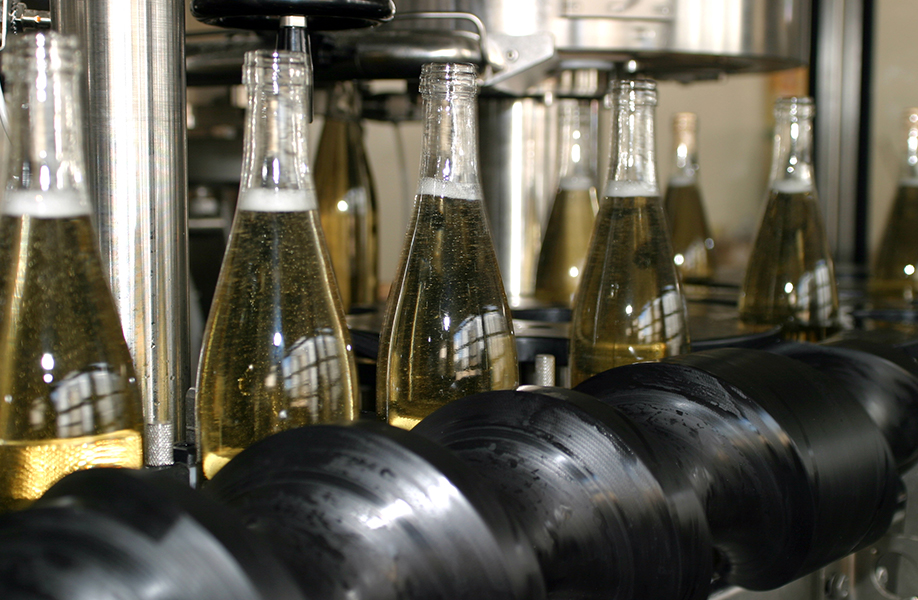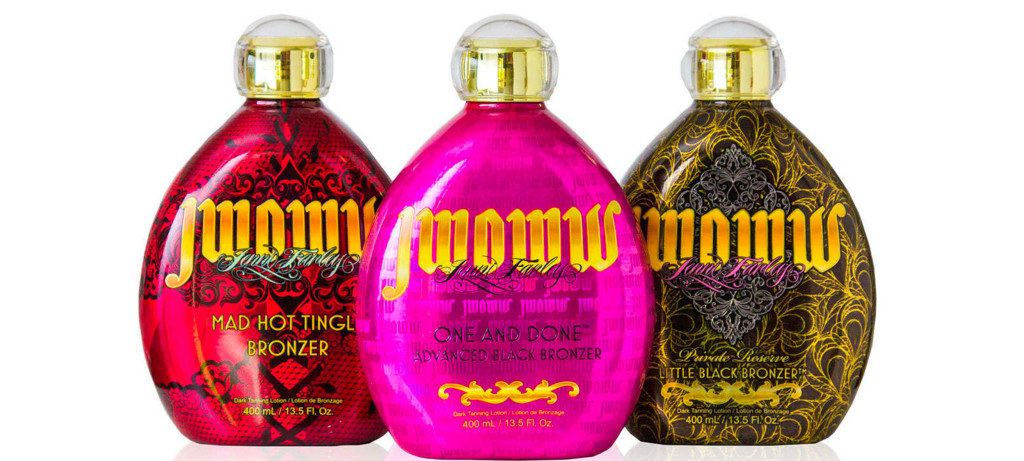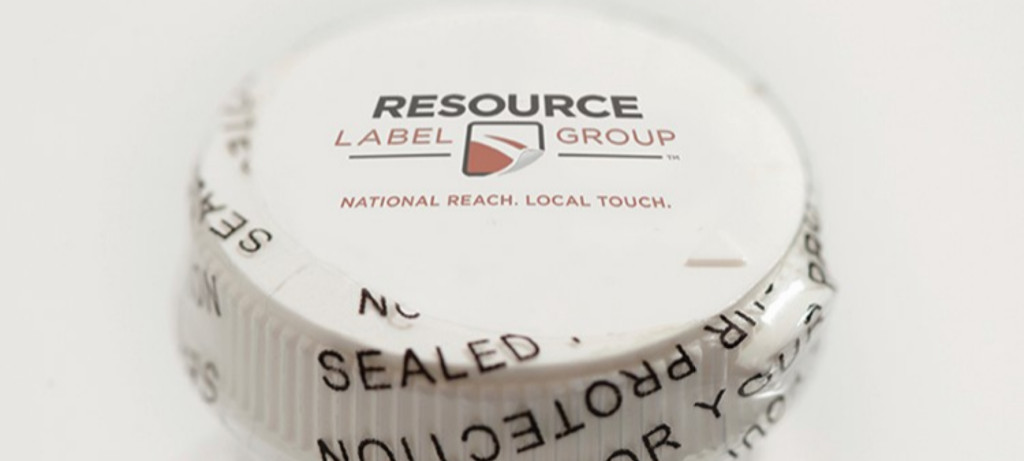How big-picture planning with your label printer will reduce supply risk & cut costs

A lot of brands handle their label supplier relationships the same way:
- After an extensive RFI/RFQ process, they select a label supplier based on pricing, production capabilities and a host of other criteria.
- They sign a contract with that supplier and issue purchase orders as necessary. They’ll communicate with their account representative on an as-needed basis.
- And when that contract expires, they initiate the RFI/RFQ process again to ensure their label pricing remains competitive.
It’s a transactional relationship. An RFQ spreadsheet is sent, and it is returned with prices filled in. A purchase order is issued, and labels arrive at your doorstep. Year-over-year cost-reductions are requested and granted.
And while there’s nothing inherently wrong with keeping your label supplier at an arm’s length, doing so leaves a lot of value on the table.
Your label printer is a key link in your product supply chain, and can reduce costs, bolster supply resilience and better differentiate your product in the marketplace — but only if you let them.
Here, we’ll discuss how looping your label printer into your brand’s big picture will help cut costs, eliminate risk and get a leg up on the competition.
And you’ll learn how to leverage the relationship with your label supplier as a competitive advantage.
Ask these two questions early and often
At least once a quarter, sit down with your label printer for a transparent, collaborative planning discussion.
Ask them:
- Do you have any cost-cutting or value-adding recommendations?
- How will you minimize risk in my label supply?
Of course, productive conversations flow both ways. You’ll need to give your label printer the information they need to consider each question from all angles.
Below, we’ll go over how you should prepare for this conversation, and how your label printer should approach answering the above questions.
How a label partner finds value for you
Early guidance isn’t just key to printing great labels. This complimentary service is one of our hallmarks as a full-service label partner. See the National Reach, Local Touch difference for yourself.
Do you have any cost-cutting or value-adding recommendations?
Label converting is a complex manufacturing process with a lot of moving parts, including:
- Printing technology — Flexographic, digital and Digital Impact hybrid presses all provide the best value in different scenarios.
- Order size and cadence — The larger your order, the lower your per-label cost. Of course, this means that you can find cost reductions by ordering more labels, less frequently (e.g., ordering 120,000 labels quarterly rather than 40,000 every month).
- Label material — Different materials come with different prices. Depending on your brand vision, you may be able to substitute an alternate material to achieve savings.
- Label size — Product labels of the same size can be grouped together on digital presses, increasing your order size and reducing your overall costs. So, it stands to reason that standardizing label sizes across product families can lead to significant savings.
- Embellishments — You have a host of decoration options, some more expensive than others, you can employ to achieve your brand vision.
Any change in the above factors will change your pricing. And experienced label suppliers print hundreds of millions for scores of brands in dozens of product categories. They’ll know which levers to pull to give you more preferable pricing.
If you send your supplier an RFQ for a very specific label product — for example, 36,000 circular labels on BOPP film with a gloss UV varnish delivered in 144 rolls with 250 labels each — they’ll give you a hard number based on the information given.
But when you open up a dialogue, you open up the possibility to guide that number down, and the overall value of your partnership up, by walking through a myriad of “what-if” scenarios:
- If you’re open to material substitutions, then we could switch to a lightweight label film that will help you achieve your sustainability goals while also cutting material costs.
- If it still fits within your brand vision, we can substitute a pattern varnish for a spot varnish, eliminating tooling costs while still giving your label a premium tactile finish.
- If you’re comfortable with slightly smaller labels, we could fit more labels across the press’ web width. This would allow us to print more labels at once, and, for one winery, updating the size in this way cut label costs by 20%.
- If you want to update your label appearance, we can work backward from your brand vision and suggest the materials and embellishments that would help you achieve it.
- If you need to meet a sustainability deadline for a key retailer, we’ll help you define a feasible path to compliance.
- If you’re interested in exploring new options, we can go beyond merely quoting, and instead brainstorm what label technologies would lend the most value to your brand. You can see how we did this for a nutraceutical brand here.
- If the risk of artwork obsolescence is low, then it may make sense to go ahead and order 100,000 labels now. We can hold the excess labels here until you need them and agree not to let your finished-goods inventory fall below 36,000 labels.
Collaboratively planning in this manner allows you to cash in on the underlying thinking of your label supplier — often leading to significant savings.
For tactical advice on how you can cut label cost without negatively impacting your branding, check out this article.
What to share with your label converter ahead of a cost-reduction discussion
- The comprehensive inventory of your label products — complete with materials, dimensions, rewind direction and other key information. This information allows your printer to view your label needs holistically, enabling them to identify patterns, make recommendations, group orders and lower your per-label cost.
- Samples, if you’re a new customer — Physical samples, or even just images, allow your label supplier to better understand how to produce your labels.
- Any plans for promotions over the next year — There’s a chance we could group promotional labels with your regular labels in the same production run to cut costs.
- Sustainability objectives – It’s important to share these with your label converter as part of long-term planning, so you can find harmony between your environmental and cost goals.
How will you minimize risk in my label supply?
A supply chain is only as strong as its weakest link. And if your label supplier fails to deliver, you’ll be left with a warehouse full of unlabeled products you can’t sell — so they need to deliver, come rain, shine, pandemic or natural disaster.
Beyond establishing a relationship with a secondary supplier, there are three general ways to ensure missed label orders never threaten the resilience of your supply chain.
All three require a regular cadence of open, transparent communication with your label supplier:
- Inventory management agreements — Establish a strong inventory management program with your supplier so that your label deliveries match your forecasted needs.
- Verify that your supplier has a strong business continuity plan — It should include layers of manufacturing redundancy and structured supply agreements with raw material suppliers.
- Work with your converter to ensure the quality of finished labels — Do your part to ensure every label that arrives at your facility exactly matches your performance requirements.
Establish an inventory management agreement
Label inventory management is difficult to get right, and expensive to get wrong. Inventorying excess safety stock of labels isn’t cheap, and not having enough labels is catastrophic.
The goal of a vendor-managed inventory (VMI) program is to eliminate that supply risk.
The supplier works closely with your brand, using historical label demand to forecast future needs. They’ll schedule production deadlines to reflect label demand, making sure to account for your product’s seasonal demand fluctuations. They make sure artwork is approved, labels are produced, and shipments are delivered ahead of your needs.
Basically, they’ll produce and inventory a predetermined level of finished labels, which you can order to be released for just-in-time delivery with condensed lead times.
To see what goes into planning a VMI program with your label printer, check out this article.
Verify that your supplier has a strong business continuity plan
Likely, you’ll verify the strength of your supplier’s business continuity plan before electing to partner with them — but it may be important to revisit this on an annual basis.
We approach business continuity from multiple angles:
Security of raw material supply — As one of the largest label converters in North America, our raw material suppliers consider us a key account. Our Strategic Sourcing Team leverages this position, negotiating structured supply agreements with a subset of major suppliers for key supply categories.
In plain speak: We do the upfront work to make sure we have a steady supply of films, papers and other materials coming to our facility — no matter the circumstances.
Dozens of locations, hundreds of presses, lots of overlap — Resource Label Group is composed of 18 production facilities throughout the United States and Canada, a network with a great deal of manufacturing redundancy.
You get local service (and reduced freight cost) from an area printer, and you can also rest assured that — should anything happen — you have 17 other production sites ready and eager to produce your labels at a moment’s notice.
Whether you’re running NFC-enabled labels, custom shrink sleeves, fully embellished spirit labels — or anything in between — there is another facility with the equipment and expertise to ensure you get your order when you need it.
We proved the resilience of our coast-to-coast network during COVID-19 pandemic. Leveraging production capacity across our operating footprint, we were able to protect response times and ensure steady supply for our clients.
Work with your converter to ensure the quality of finished labels

Reducing supply risk isn’t just about making sure your label orders arrive on time — it’s about making sure every single label that does arrive meets your quality standards.
You’ll need to have open conversations with your printer to ensure label quality matches brand expectations, from artwork to production, application and beyond.
We’ve actually written at length on this topic — you can learn how to approach all the necessary quality-related conversations by reading the below articles:
- How to ask about your printer’s QC process during production
- The quality control gateways you need to ask about during the label sales process
- The conversations you need to have to ensure printed graphics exactly match your brand standards
In regard to quality, there’s a lot you need to talk about with your label printer at the outset of a relationship.
But these conversations get easier every time you have them.
They build off of each other — once your label printer understands what you need from them in terms of quality, and you understand what they need from you in terms of information, your vendor/client relationship will run like a well-oiled machine. And there shouldn’t be any quality surprises when you inspect your label rolls.
What to share with your label converter ahead of a risk-reduction discussion
- Your historic label needs, including seasonal fluctuations — This information will be used to forecast your future needs and establish a vendor-managed inventory program that meets them.
- Your expectations — Do you have brand standards for spot colors? Will your label have to withstand moisture, sunlight or low temperatures? What would force your brand to reject a label order based on quality? Is there a certain “je ne sais quoi” you’re looking to achieve with your label?
- Any production changes you anticipate in the near future — Let us know if you’re planning to shift production to other locations or change your co-manufacturing network. With many layers of manufacturing redundancy throughout North America, we can ensure label supply continuity for your brand.
- Your future plans — The more we know, the more we can help you plan and help you choose the right application equipment (for pressure-sensitive labels or shrink sleeves) for your label products.
What’s your brand’s big picture?
The more we plan together, the more value we can add to your brand and your bottom line. Reach out to our team today — we’re happy to have an open, honest, helpful conversation with you about how to maximize the value of your label spend.
Find the best solution that makes the most sense for your brand.
Tags:


